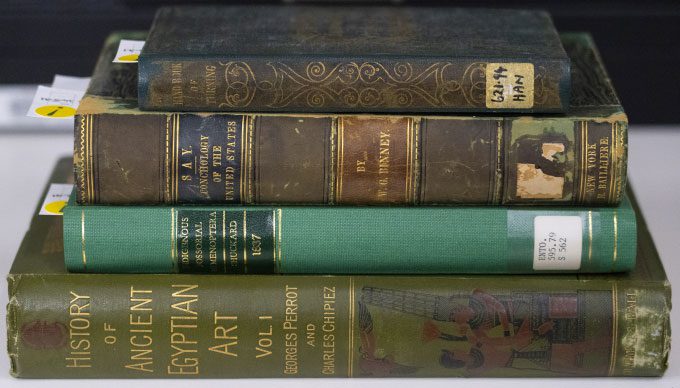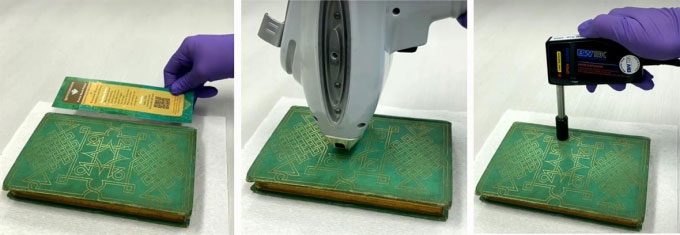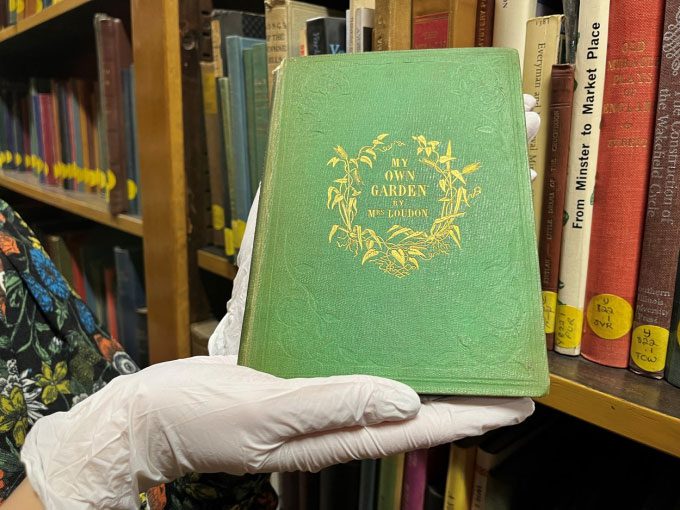Many experts have launched a campaign to locate and recover these dangerous books.
Books that can kill sound like a science fiction or horror story, but there are indeed a number of books scattered around the world that contain poison. These books caused many mysterious deaths for readers hundreds of years ago and still exist in old libraries today. It wasn’t until modern science developed that the secrets of the “killer book” were revealed.
These toxic books were mass-produced in the 19th century and can belong to any genre. Their “killer” aspect is not in the content but in the book cover. They were bound in fabric dyed with emerald green pigment containing arsenic. At that time, people did not fully understand the dangers of this arsenic dye and inadvertently created a series of mysterious deaths.

The killer aspect of these books lies in their covers. (Illustrative image).
In fact, this green dye was also used to color everything from artificial flowers and clothing, not just book covers. When fabric coverings became a more popular and affordable alternative to leather, the use of fabric for covers became widespread. Publishers loved the luxurious emerald green color, despite its hidden dangers.
This toxic dye was first commercially developed in 1814 by the White Lead and Dye Company Wilhelm in Schweinfurt, Germany. It was used everywhere, from clothing and wallpaper to artificial flowers and paint. To say that Victorian England was bathed in emerald green is an understatement. By 1860, over 700 tons of emerald green pigment were produced in the country alone.

Arsenic is needed to create emerald green dye.
The toxicity of arsenic was known at that time, but the vibrant color remained popular and was produced widely due to its low cost. Wallpaper released toxic green dust that covered food and floors, while clothing containing skin irritants poisoned the wearers. Despite the risks, emerald green became deeply ingrained in Victorian life, literally becoming a color of death. Despite its toxicity, this color was never banned from production. It only disappeared in the 20th century simply because it went out of fashion.
The effort to recover these literally toxic books
One dangerous fact is that these old green-covered books are still widely circulated and exist scattered to this day. Melissa Tedone, head of the library conservation laboratory at the Winterthur Museum in Delaware, USA, has launched a campaign called the Poison Book Project to locate and catalog these toxic volumes.
So far, the team has discovered over 150 19th-century books with emerald green covers. Ninety of them are covered with vibrant green fabric, while the others have the pigment integrated into paper labels or decorative details. Tedone even found an emerald green book discounted at a local bookstore that she purchased.

Old 19th-century books with green fabric covers are being called for recovery.
Although after such a long time, these toxic books may only pose a minor risk unless someone decides to read a nearly 200-year-old book for hours, these “killer books” are not entirely without risk. Those who frequently handle them, such as librarians or researchers, may inadvertently inhale or ingest particles containing arsenic, leading to symptoms like lethargy, dizziness, or gastrointestinal distress. For the skin, arsenic can cause irritation and damage. Severe cases of arsenic poisoning can lead to heart failure, lung disease, neurological dysfunction, and in severe situations, can be fatal.
So how common are these toxic green books? Tedone says: “It’s a bit hard to predict because our data is still small, but I believe there could be thousands of such books around the world. Any library that collects old books from the mid-19th century might have at least 1 or 2 of them.”


















































